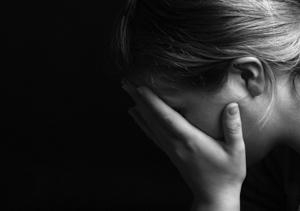Mental disorders: debunking some myths of the DSM-5
The DSM-5 is not above criticism, but is probably the best manual of mental disorders we are likely to get, writes Perminder Sachdev.
The DSM-5 is not above criticism, but is probably the best manual of mental disorders we are likely to get, writes Perminder Sachdev.

OPINION: The fifth edition of the Diagnostic and Statistical Manual of Mental Disorders (DSM-5) is due to hit psychiatrists' and psychologists' shelves next month. Produced by the American Psychiatric Association (APA), the DSM provides a standardised system of diagnosing mental disorders.
From its first edition in 1952, and with each new edition about every 15 to 20 years, the DSM has always had its critics. But as the arrival of DSM-5 approaches, their clamour is becoming louder.
As a member of the DSM-5’s Neurocognitive Disorders Work Group, I’m familiar with some of the procedures involved in bringing the manual into shape. So let’s look at four key criticisms about the DSM-5 – and whether they’re warranted.
1. It’s impossible to classify mental disorders
The primary purpose of the DSM-5 is to enable physicians or other clinicians to reliably diagnose patients who present with a mental disorder. The manual also outlines treatment pathways for the diagnosis, and the likely outcome over time.
Unlike other disciplines of medicine, a mental disorder cannot be confirmed by a pathologist peering down a microscope or a biochemist measuring molecules in the blood. Aside from a few exceptions, there is no other way of truly knowing whether a disease really exists.
Inevitably, there will be differences of opinion about what constitutes a disorder, and some of these will be major ones. But using the DSM, two clinicians working remotely from each other should reach the same diagnosis for a particular patient.
2. The DSM is just a money maker
Critics have argued the DSM “enterprise” has been very lucrative for the APA, and that book royalties are the primary motivator for producing yet another edition.
Considering that about US$25 million has already been spent on the fifth revision process, as estimated by the chair of the task force, it does not appear to be a great investment if book royalties were the primary objective.
Neuroscientific knowledge is exploding exponentially, so revisiting the classification of mental disorders after two decades is certainly not premature.
3. Under the DSM-5, more people will be diagnosed with a mental disorder
The process of revising the DSM is extremely rigorous, and any proposal for a new disorder or a major revision of existing criteria needs to come on the back of strong scientific evidence.
There are 13 DSM-5 working groups, broken down into categories such as mood disorders, eating disorders, and substance-related disorder. Any new proposal must be accepted by other members of the advisory group, all of whom are experts in their field.
The total number of disorders in DSM-5 is yet to be announced, but its chair David Kupfer has said the total number of disorders will not be more than in the DSM-IV: 297.
It’s important to note that the illnesses clinicians encounter in the psychiatric clinic is often a more severe form of a phenomenon that pervades society. Psychiatrists must therefore identify if it is severe or deviant enough to warrant attention.
The DSM-5 is intended to help them make that decision. They often end up applying a threshold at which a particular set of symptoms become a disorder or a diagnosis. The threshold is guided by the level of distress or dysfunction that the individual is suffering.
It is therefore not a culturally influenced whim, but culture does influence the decision. Differences in such thresholds lead to the controversies in the diagnosis of attention-deficit hyperactivity disorder (ADHD), for example, or when bereavement becomes depression.
4. The DSM is trying to redefine what’s normal
The DSM-5, and any other classification of mental disorders, is not an attempt to define what is normal. Being normal is not the same as “not having a DSM-5 diagnosis”, and having such a diagnosis is not the same as being “insane”, as some have wrongly argued about the DSM.
Insanity is in fact a legal term, and “mad” or “crazy” are stigmatising lay terms that do not apply to the vast majority of people with a DSM-5 diagnosis, and should not in fact be used for anybody.
Many individuals, including physicians, find it difficult to accept that mental illness, not unlike physical illness, is common and most of it is not madness or insanity. The 2007 National Mental Health Survey showed that one in five Australians experienced a mental disorder in the previous 12 months.
When dealing with the imperfections of psychiatric neuroscience, it is clear that the debate on the appropriateness or otherwise of the classification system will continue as the mental health profession ponders what is worth treating and society delineates what is worth helping.
The DSM-5 must simply be regarded as psychiatry’s next faltering step. It’s not above criticism, but is probably the best manual of mental disorders that we are likely to have for some time.
A truly uncontroversial DSM-6 will have to await major breakthroughs in our understanding of psychiatric disorders. Let’s hope we don’t have to wait for more than a generation.
Perminder Sachdev is Scientia Professor of Neuropsychiatry and Co-Director of the Centre for Healthy Brain Ageing (CHeBA), UNSW.
This opinion piece first appeared in The Conversation.